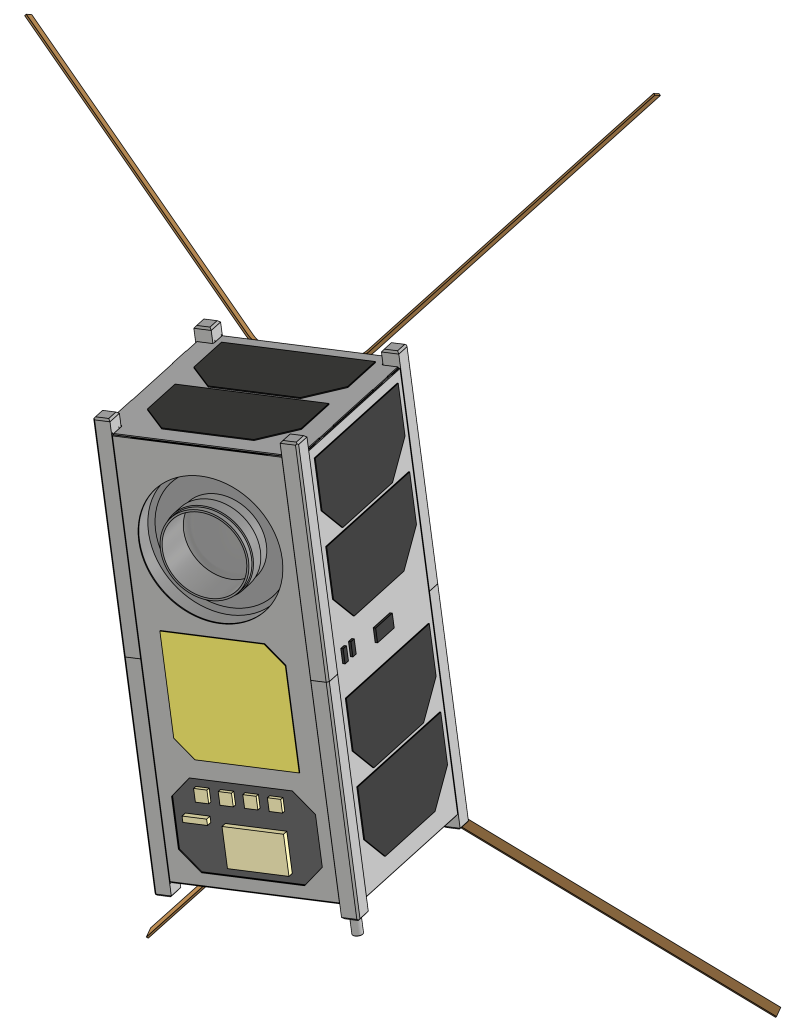Since 2001, students at AAU have designed, built, launched and operated five cubesats.
Our adventure came to life around 2000 when students had been watching how Ørsted – the first Danish satellite – got brought to life and launched before their eyes.
Inspired by Bob Twiggs, USA, who invented the CubeSat standard, our students just required support from the Dep of Electronic Systems, starting the CubeSat adventure in late 2000.
Our first CubeSat – AAU CUBESAT – was built in less than two years and was on the very first CubeSat launch in 2003. Since then, we have launched AAUSAT-II, AAUSAT3, AAUSAT4 and AAUSAT5. In addition, we have had a number of payloads on other satellites, a number of parabolic flights and stratospheric balloon experiments!
In addition to all the good hours and fun, we have seen GomSpace, Space Inventor and Satlab A/S being raised in our labs before they moved out of AAU, but all still within 1,2 and 7km of AAU. Combined, they employ more than 300 people and deliver missions, satellites and subsystems to all continents.
As an organisation, we are proud to see the high quality of engineers in the companies and have been passionately following their journey from LEO to GEO and now even reaching deep space!
AAU Cubesat
Sep 2001 – October 2003
Launched: 30-06-2003 from Plesetsk, Russia
After the Ørsted satellite, students gathered and started working on AAU Cubesat, intending to provide hands-on education and gain experience with satellite technology.
The satellite was included in one of the earliest CubeSat launches, where the team successfully operated it for two and a half months before facing battery issues. Deeming the mission a huge success, they started a chain of missions from Aalborg University, building on top of their experience.
Find the original homepage here
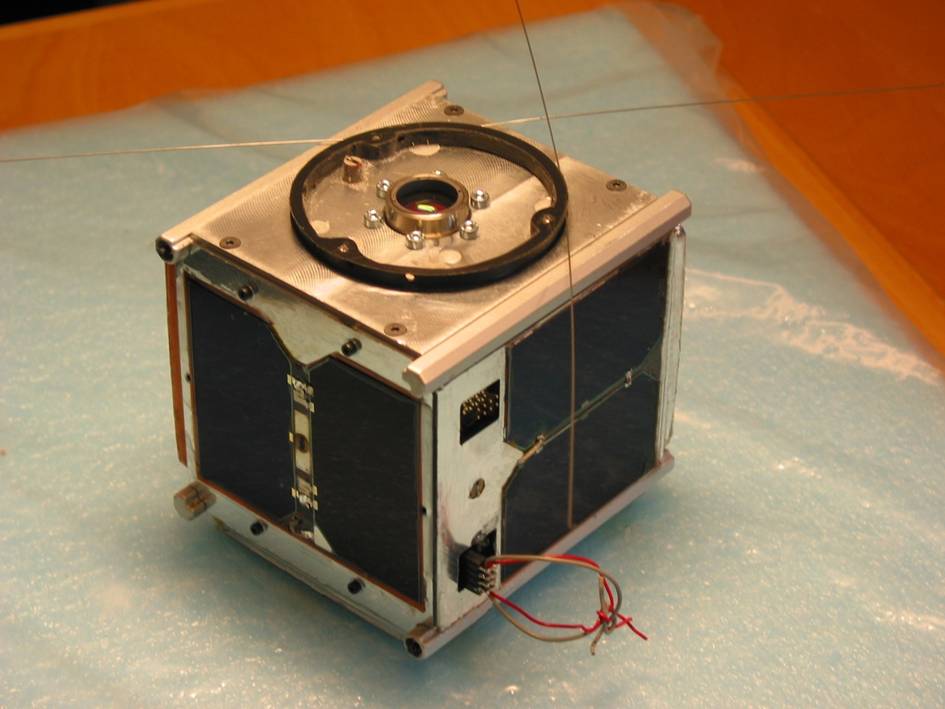
SSETI Express
2004 – 2005
Launched: 27-10-2005 from Plesetsk, Russia
As an ESA initiative, the “Student Space Exploration and Technology Initiative” (SSETI), students from AAU Satlab had the opportunity to work on a small satellite measuring 60x60x90 cm.
After the success with AAU Cubesat, our students were given a leadership role for the mission, supervising students on an international level.
SSETI Express had a successful launch, where the system worked flawlessly; however, an issue arose in the electronic power supply (EPS), preventing the batteries from charging. This resulted in the satellite going dark 12.5 hours after launch. The mission was still considered a success with only 2 of 19 subsystems failing, albeit 5 could not be tested due to the early issues.
Shortly after SSETI Express, three students from the organisation formed GomSpace in 2007.
Read more here

AAUSAT-II
2003-2008
Launched: 28-04-2008 from SDCS, India
Building on top of the success of AAU Cubesat, large efforts were made to improve the communication chain for simplex and half-duplex communication. Alongside a more advanced attitude determination and control system (ADCS), which now included detumbling algorithms.
Danish Space Research Institute (DSRI) delivered a gamma ray detector, which flew as the science payload.
Through AAUSAT-II’s operations phase, there were issues establishing uplink to the satellite; however, with help from the HAM community, communication was made, and our ground setup was upgraded with a 1kW power amplifier 🙂
This was a huge success, with the satellite promptly responding; however, the satellite started tumbling at one point, reaching upwards of 64 RPM! The new detumbling algorithms, once activated, ended up getting the satellite under control and saving the mission.
Amateurs have been able to receive telemetry from AAUSAT-II until August 2022 (see satblog.info), keeping alive for more than 14 years! AAUSAT-II reentered 20-05-2025.
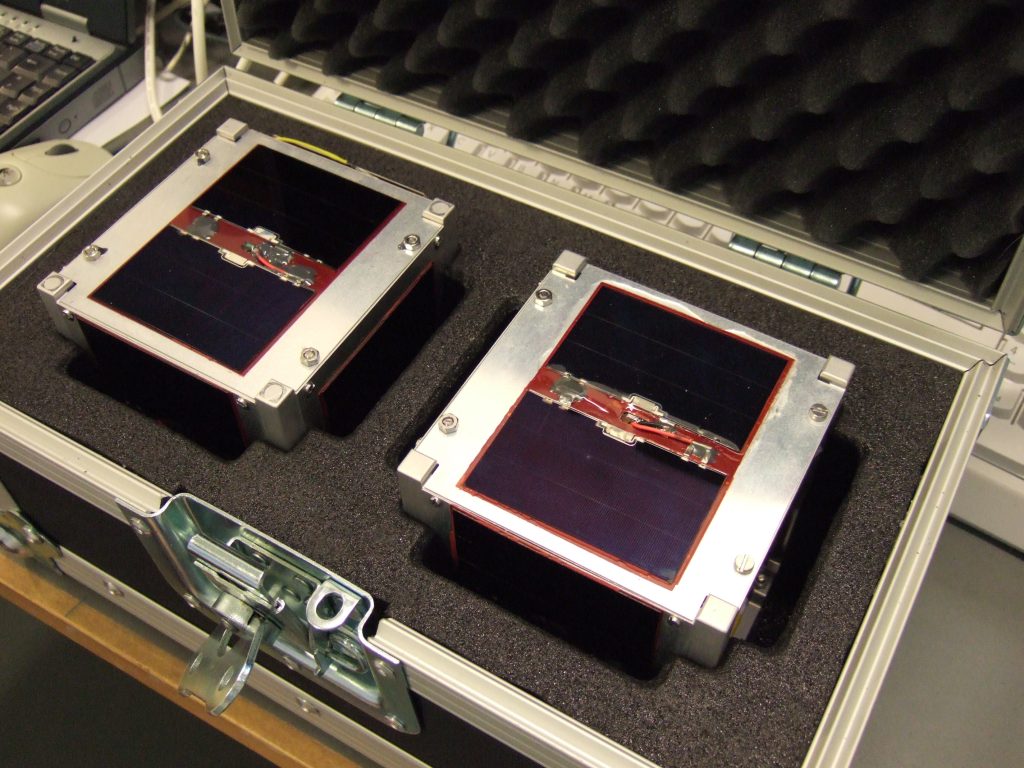
AAUSAT3
Fall 2007-2013
Launched: 25-02-2013 SDSC, India
AAUSAT3 was our third student-developed CubeSat, which focused on radio payloads. In cooperation with DaMSA (Danish Maritime Safety Administration), the main payload was two AIS (Automated Identification System) receivers. The receiver’s purpose was to collect AIS signals from ships in the vicinity of Greenland.
The first AIS receiver is based on an SDR (Software Defined Radio), allowing for increased flexibility. Such as monitoring multiple AIS channels at once and correcting custom algorithms. The other receiver is based on a commercial transceiver chip for a simpler design. This was used to improve the satellite’s communication chain and ground setup. And was the first commercial product of Satlab A/S
The communication protocol CSP (CubeSat Space Protocol) was developed for the internal bus in AAUSAT3, and has since made its way into commercial products.
In 2009, the team tested the AIS receivers codenamed NAVIS (North Atlantic Vessel Identification System) onboard the stratospheric balloon BEXUS. This ended up as a huge success that exceeded expectations, which also turned out to be the case once it was launched onboard the satellite itself!
AAUSAT3’s end of life was declared 1st of October 2014, due to battery issues far exceeding the one-month planned life span, deeming the mission a success.
Find the original homepage here
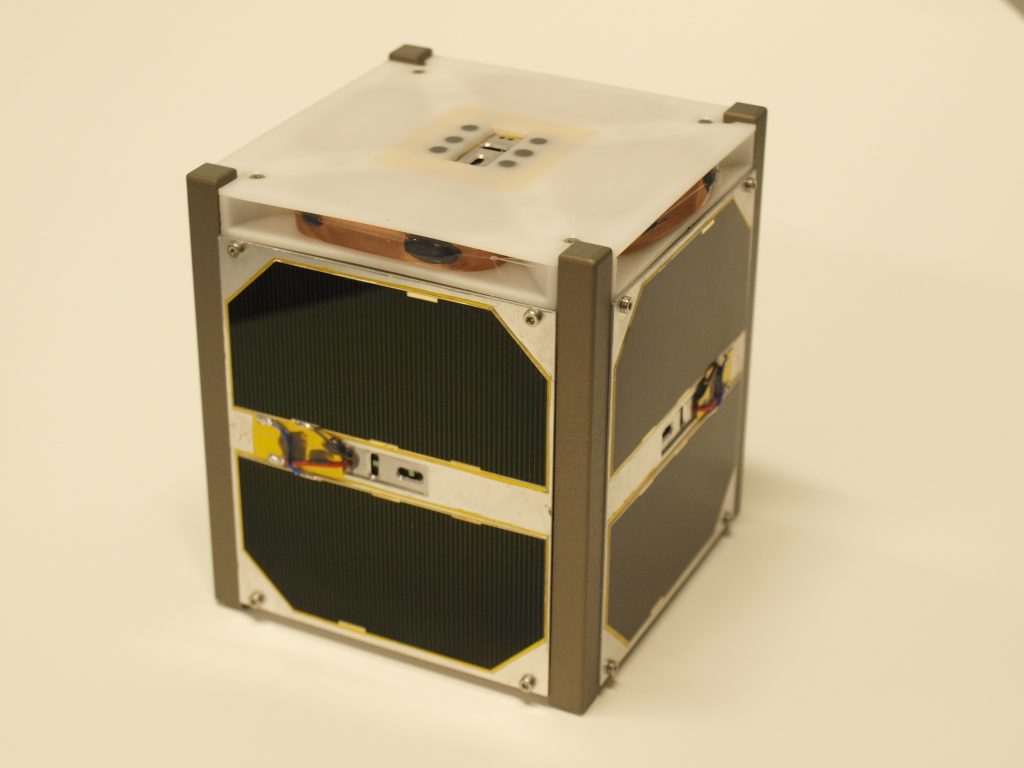
AAUSAT4
2014-2016
Launched: 25-04-2016 from French Guyana, France
AAUSAT4 relied heavily on the design of AAUSAT3, introducing minor improvements across the satellite bus. In cooperation with DaMSA, the AIS payload was reused to extend the coverage of ships around Greenland.
However, as something new, this mission was a part of the first edition of ESA’s Fly Your Satellite programme. Our students got an extensive insight into the European space industry, where they documented and tested the satellite to industry standards. They were invited to the ESA testing facility at ESTEC in the Netherlands, from which the picture of AAUSAT4 was taken inside a thermal vacuum chamber emulating the harsh conditions of space.
Throughout the documentation and testing phases, the team got feedback and supervision from ESA experts.
For more info, look at the AAUSAT3 homepage here
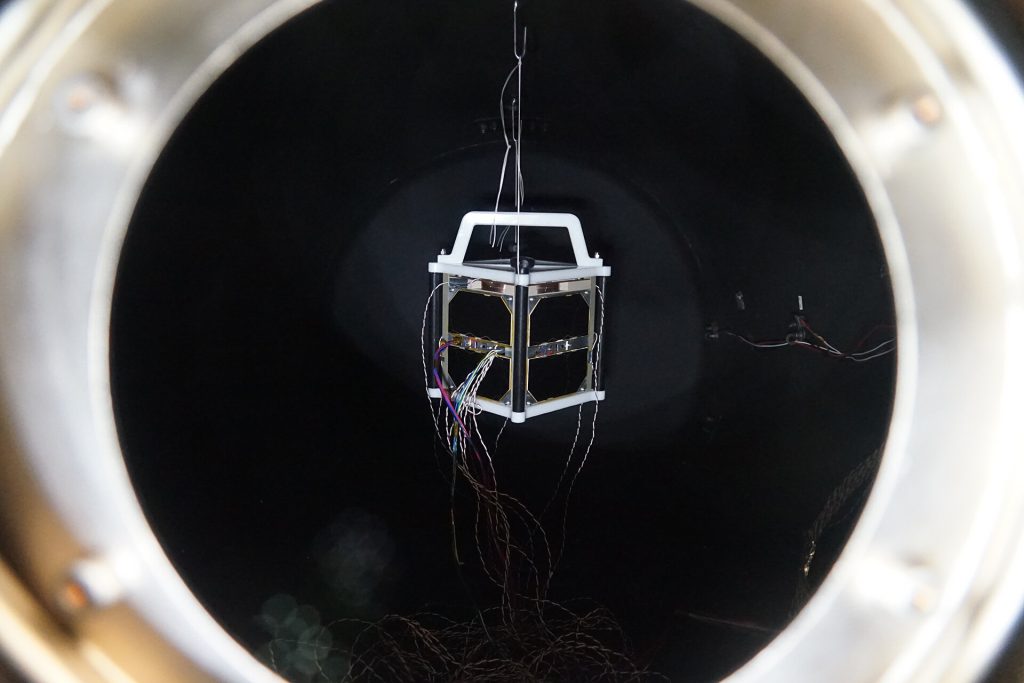
AAUSAT5
Launched: 02-09-2015
Released 05-10-2015 from ISS
AAUSAT5 has continued to use the AIS payload and the satellite bus with minor changes. Looking at the launch date, you might be inclined to think the students at AAU can’t count, as AAUSAT5 was launched before AAUSAT4. This is merely a coincidence of AAUSAT4’s launch being postponed multiple times, and the organisation being invited to a special edition of ESA’s Fly Your Satellite from the ISS.
AAUSAT5 and GOMX-3 from GomSpace had the honour of being delivered to Andreas Mogensen and joined him on his first trip to the ISS. Both satellites are the first CubeSats to be released from the ISS, which was recorded in this video.
For more info, look at the AAUSAT3 homepage here
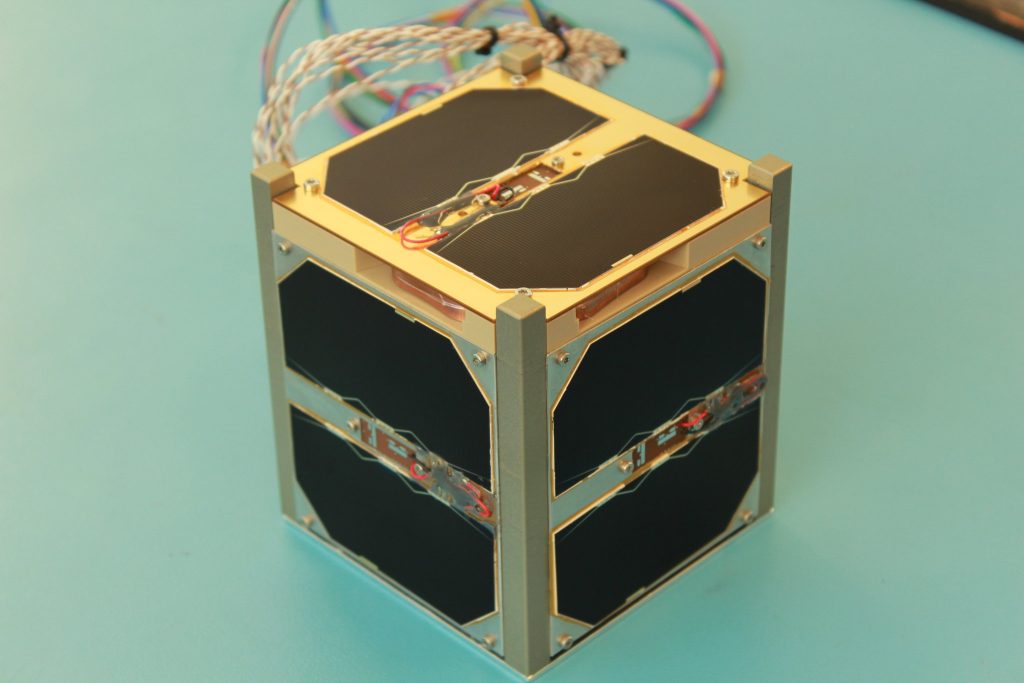
AAUSAT6 – Active development
AAUSAT6 is the sixth student-satellite from AAU and is currently in development, and thus not quite history yet 🙂 Check out the main page for AAUSAT6.
